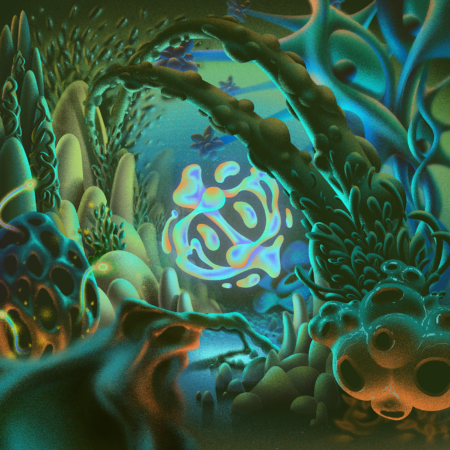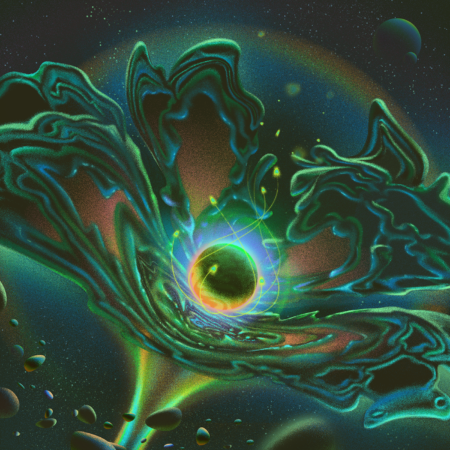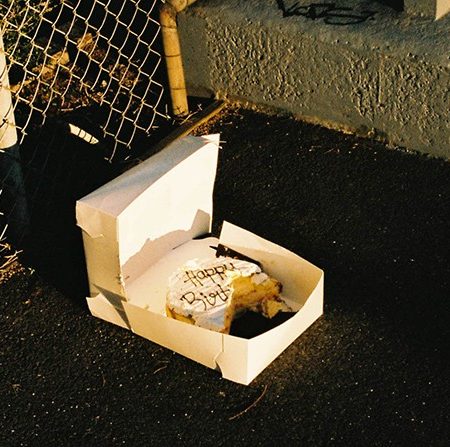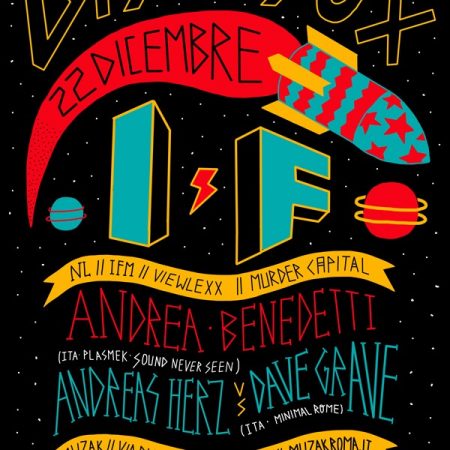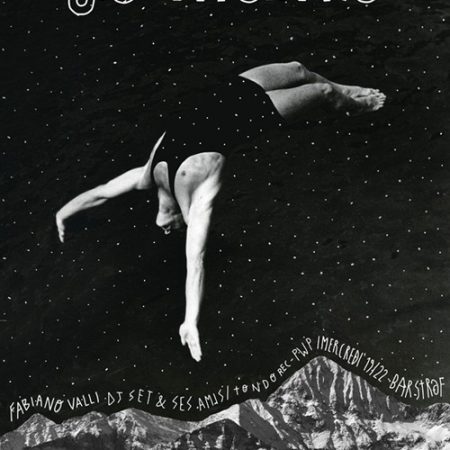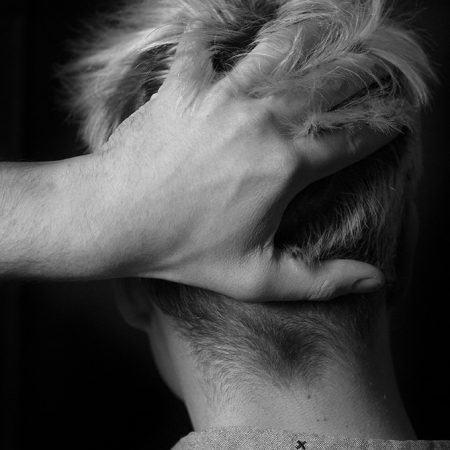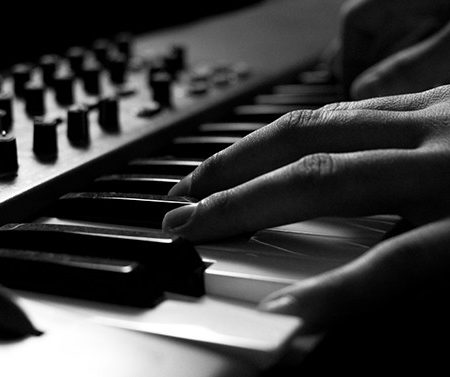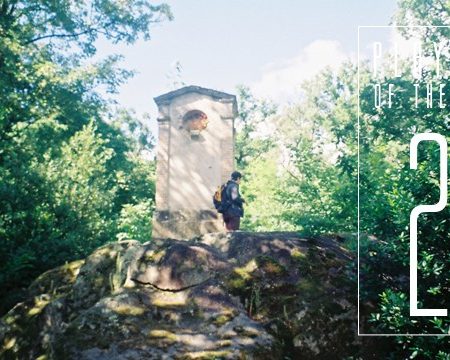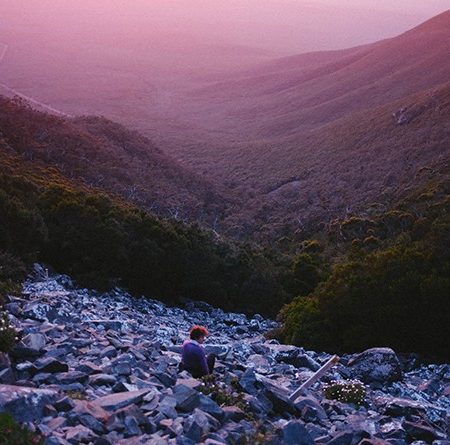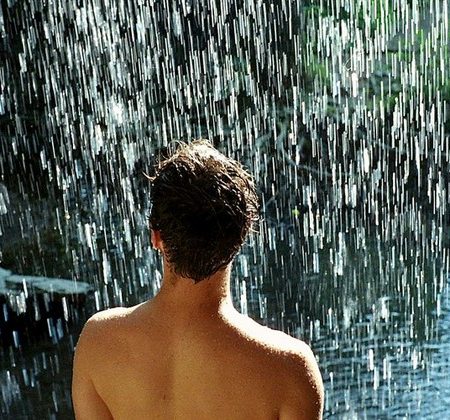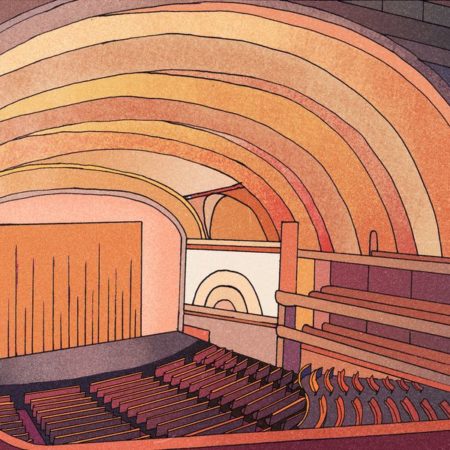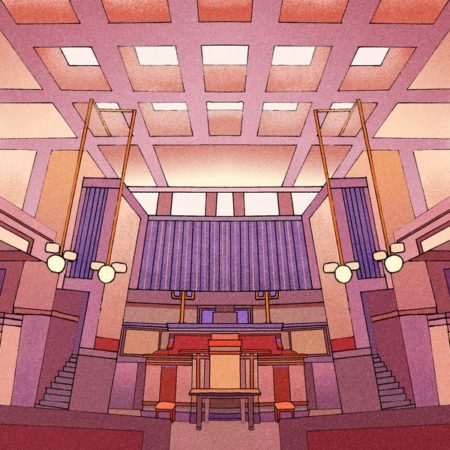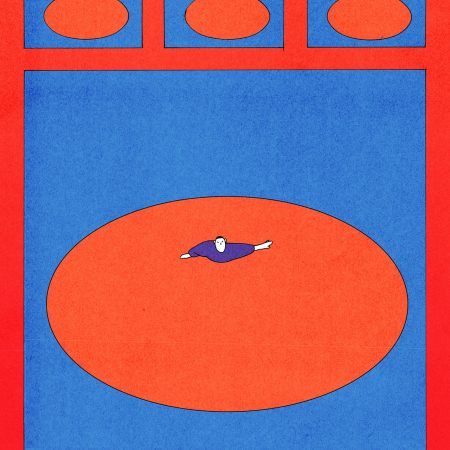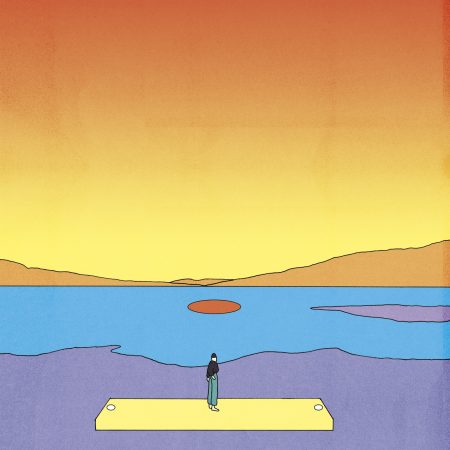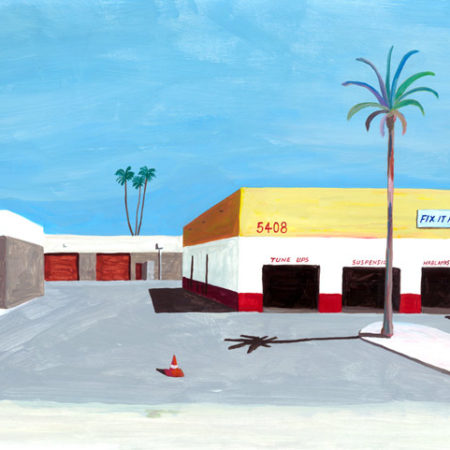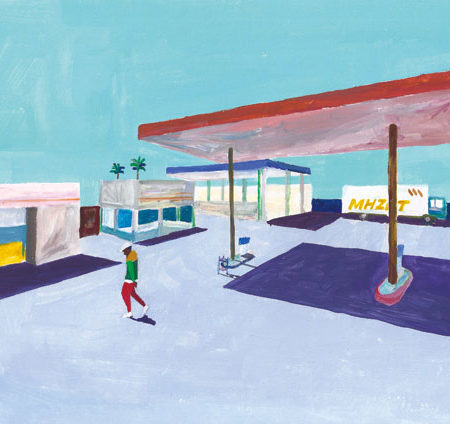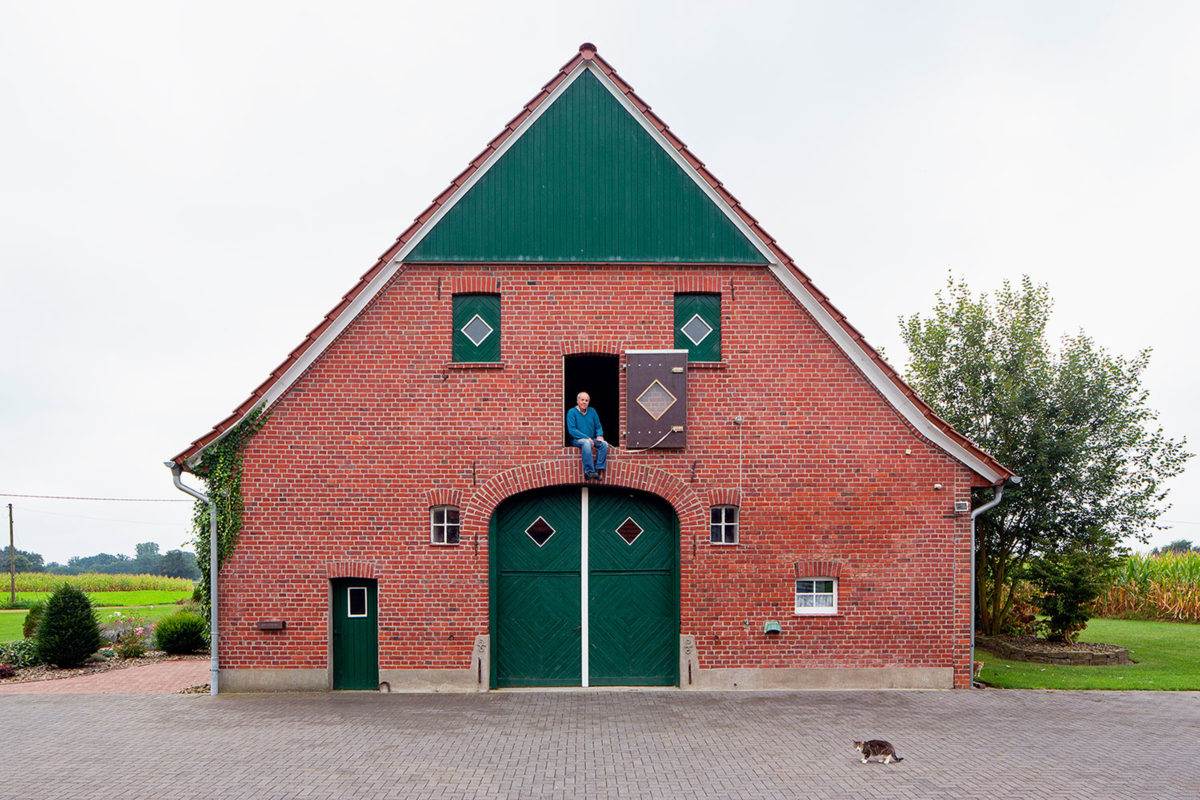
Roland Icking – FACadE
PHOTO . January 25th, 2024In 2017, we ask the german photographer Roland Icking to write a little something about a selection of pictures from his series “FACadE”. The collection has now 100 entries and we asked him to do the same with 10 different photos. But first, here’s how he introduces his series:
This project is about farm houses that look like abstract faces and the people and animals living in them. The houses are located in the German-Dutch border area (the region of the city of Borken on the German side, and Achterhoek on the Dutch side).
In the beginning, it was meant to be a photographic documentary of architecture, and I just photographed the buildings. Then I started asking the people to be in front of the camera. Another step was expanding the digital options. I tried capturing more of the farm as a whole and asked the people to act and interact with each other and the animals to create a little story related to the farm’s personality.
I remember the drawings I made as a child: of a house, mom, dad, kids, dog, car, tree, clouds and a smiling sun. I think these photos have a lot of those early drawings.
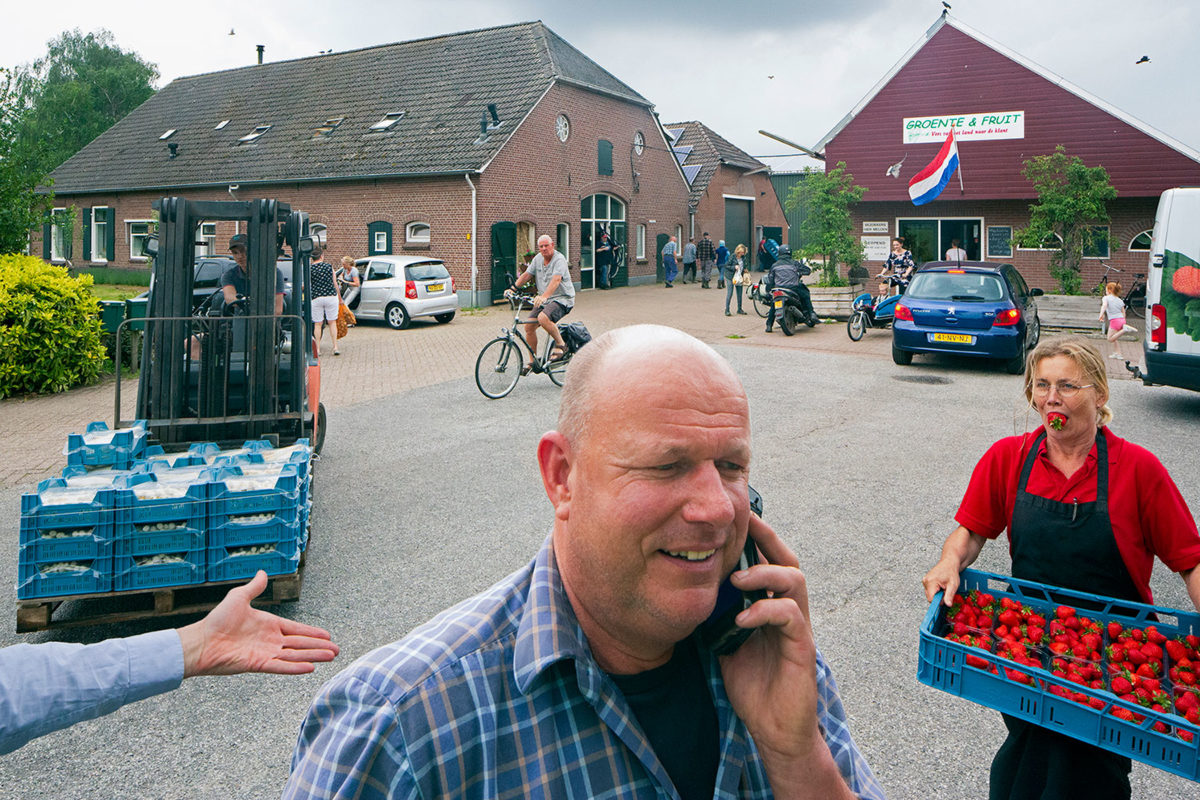
03-06-2019 / Aalten-De Heurne (Netherlands)
A farm with a farm store. In the foreground: the visionary managing director as the central figure of light, flanked by his enthusiastic, hands-on employees who present the freshly harvested, crunchy, irresistible organic fruit and vegetables grown on the farm. In the background: customers who finally feel understood. There are a lot of them. And the numbers are growing.
As you can see, preparations for a photo like this are in full swing!
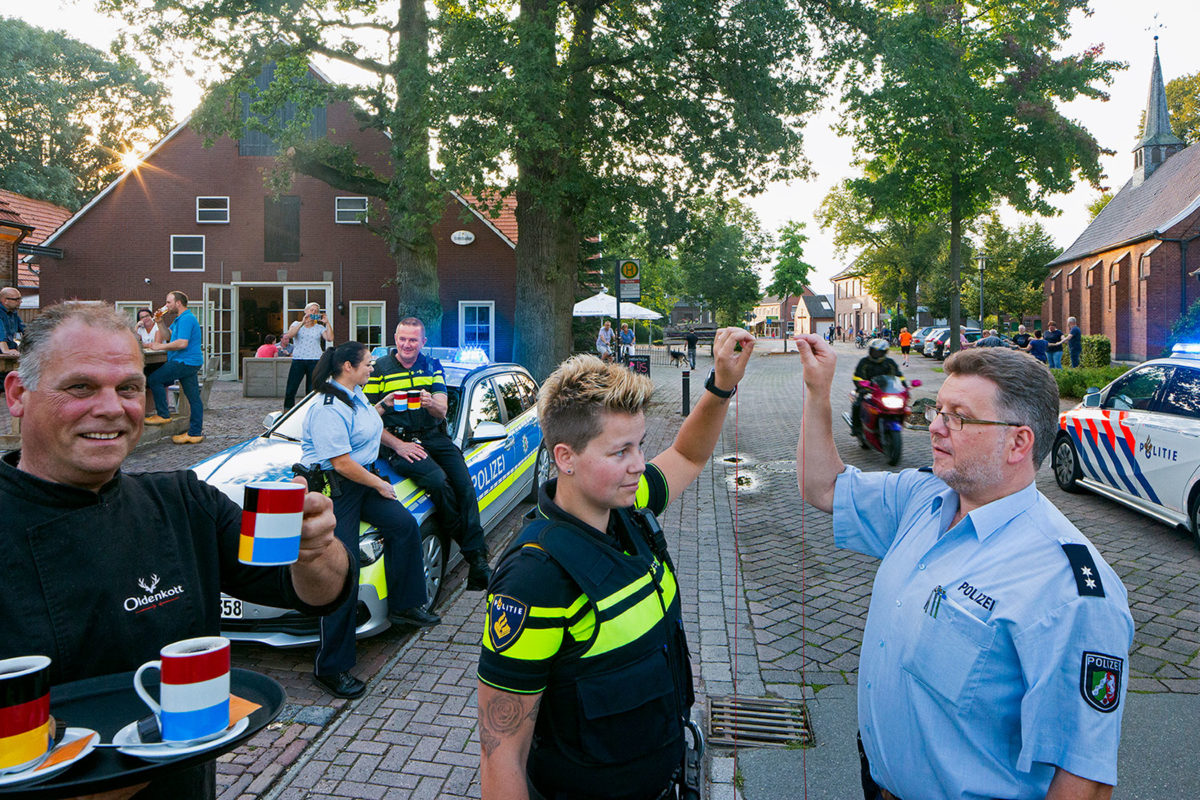
22-08-2019 / Vreden-Oldenkott (Germany)
This photo shows a meeting of a German (“Polizei”) and a Dutch police team (“Politie”) on a street in the German village in the immediate vicinity of the border crossing to the Netherlands.
The Dutch policewoman and the German policeman are holding up a red thread as a symbol of the border (red is also the color shared by the flags of both countries). The short horizontal distance between the fingertips shows the exact course of the national border in the background.
The relationships between Germans and Dutch people are particularly close and interwoven here. So why do the police still need to secure the border here? Because otherwise the little tightrope walker in the red dress (which is a little difficult to make out) would fall off the thread.
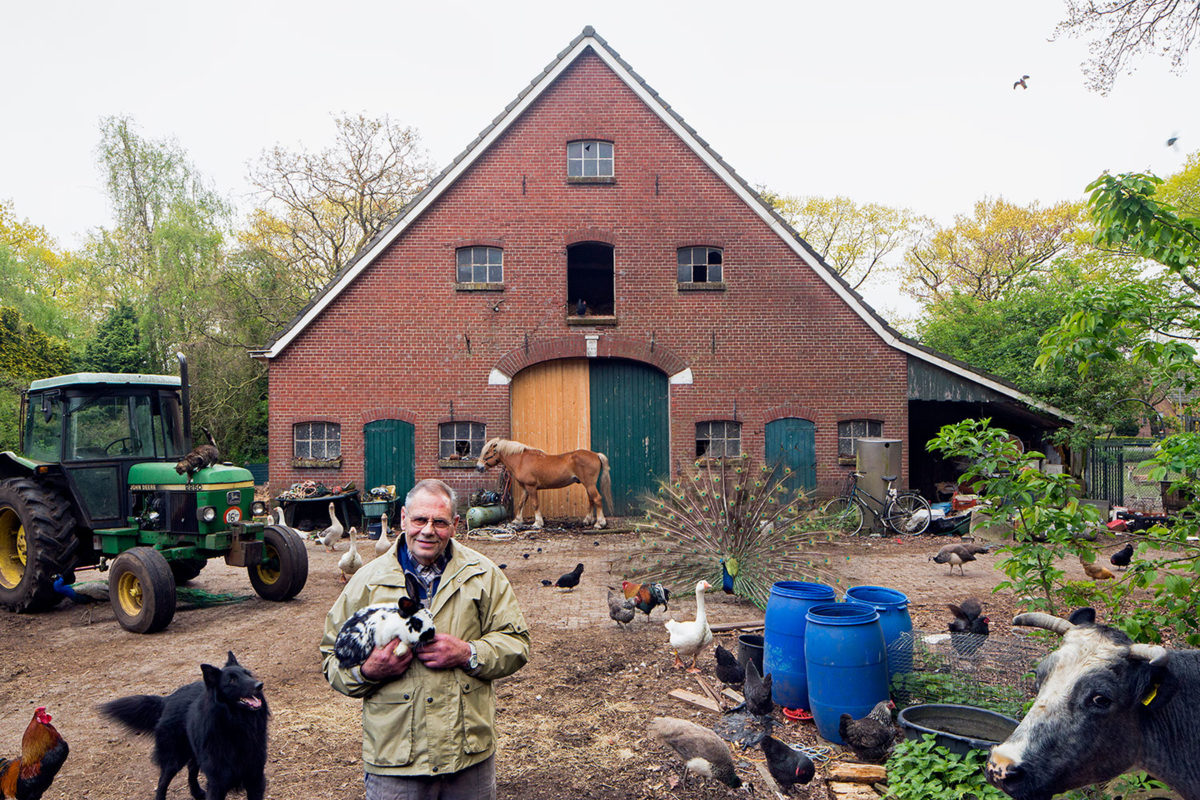
05-05-2017 / Aalten-Haart (Netherlands)
I discovered this farm from 1929 when I was driving through Aalten and suddenly saw chickens and peacocks running around on a driveway and the road I was driving on. Of course I had to take a closer look. That was the beginning of a kind of friendship. Since then, I have visited the man in the foreground regularly when I have been in the area.
After the death of his parents, he had taken over the dairy farm together with his sister, but health problems and the sudden death of his sister, who bled to death in the cowshed in 2000 under unexplained circumstances, led to the gradual decline of the farm, as he once told me.
But there’s something comforting about the result: not only because I really like the man and have fond memories of the process (I photographed on five different days over a period of three years), but also because the message is strong: on the one hand, loneliness and decay, and on the other, a little paradise.
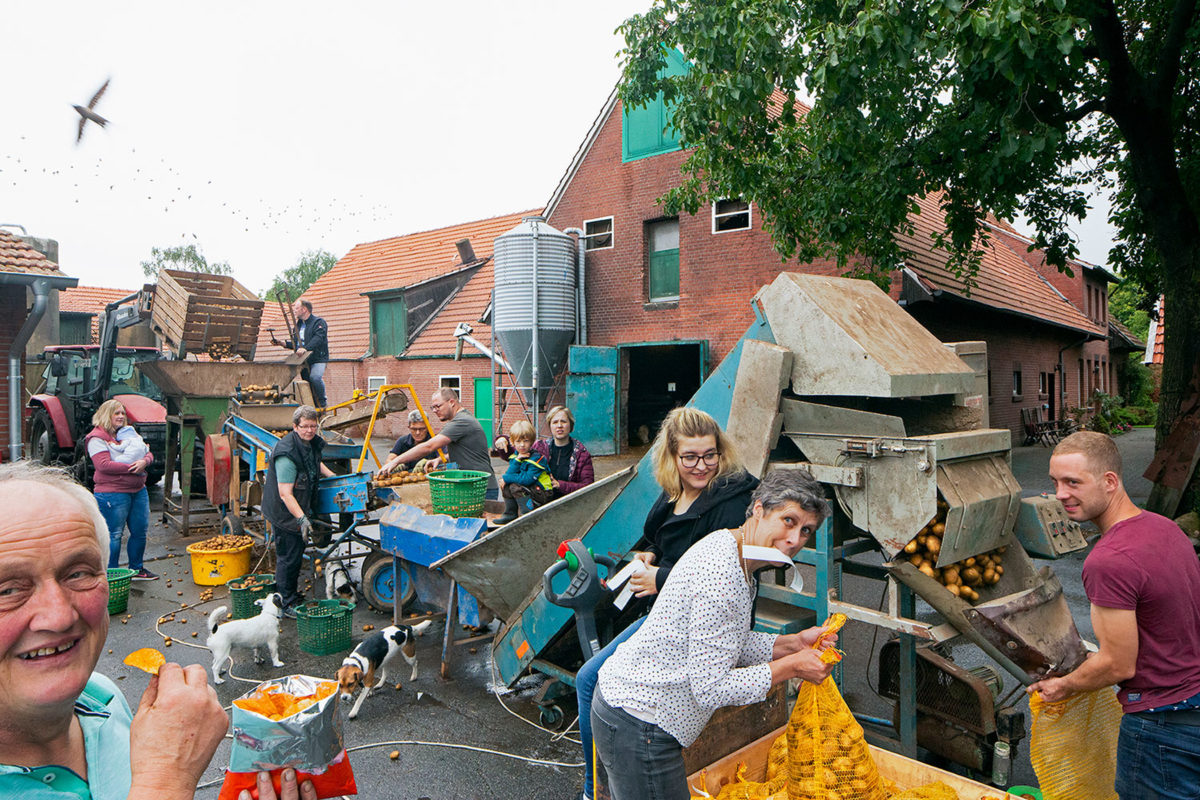
18-08-2019 / Vreden-Großemast (Germany)
What is rattling here is a potato sorting machine, the process of which, from filling the potatoes with the tractor into the hopper of the sorting machine consisting of several components, in which the potatoes are mechanically sorted by size and checked for quality by eye, to filling a certain quantity into bags, requires the commitment of the whole family and relatives and almost completely fills the picture diagonally from left to right.
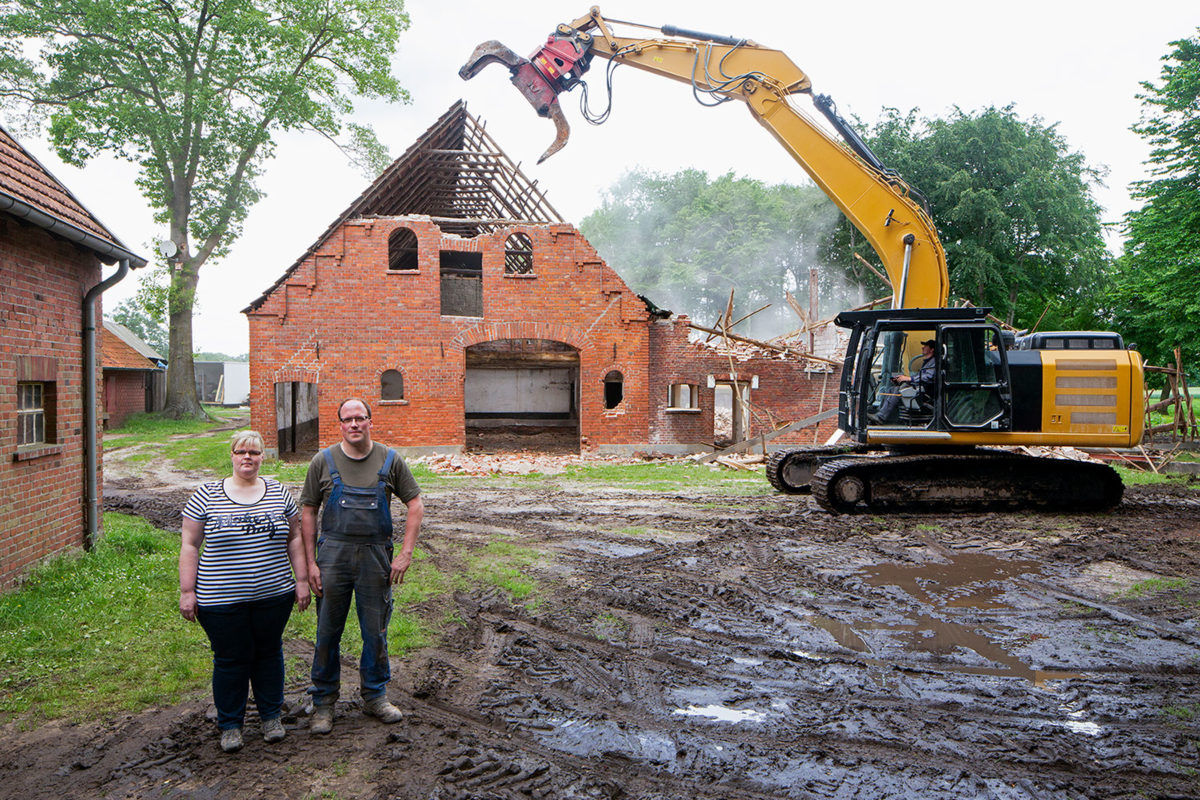
21-05-2016 / Vreden-Ammeloe (Germany)
When I set up the camera, the demolition excavator was behind the buildings and was already gnawing away at the building on the right until it collapsed. At first I was disappointed that I had lost this larger and more beautiful residential building without having photographed it in time. On the other hand, there was now space for the stable building with the “face” that I was after, as well as for the excavator, if I could still manage to get it in front of the camera.
During his lunch break, I was alone with the excavator driver and waited for the necessary clouds for even lighting conditions. When they finally came and covered the sun, I asked the driver if he could stand a few meters in front of the smaller stable building with his excavator and position the gripper arm as if a Tyrannosaurus Rex was about to open its mouth to eat its helpless victim.
A little later, when the owner couple reappeared, the mood was a little less tense after the lunch break and I asked them to stand in front of the camera for a moment, which they did.
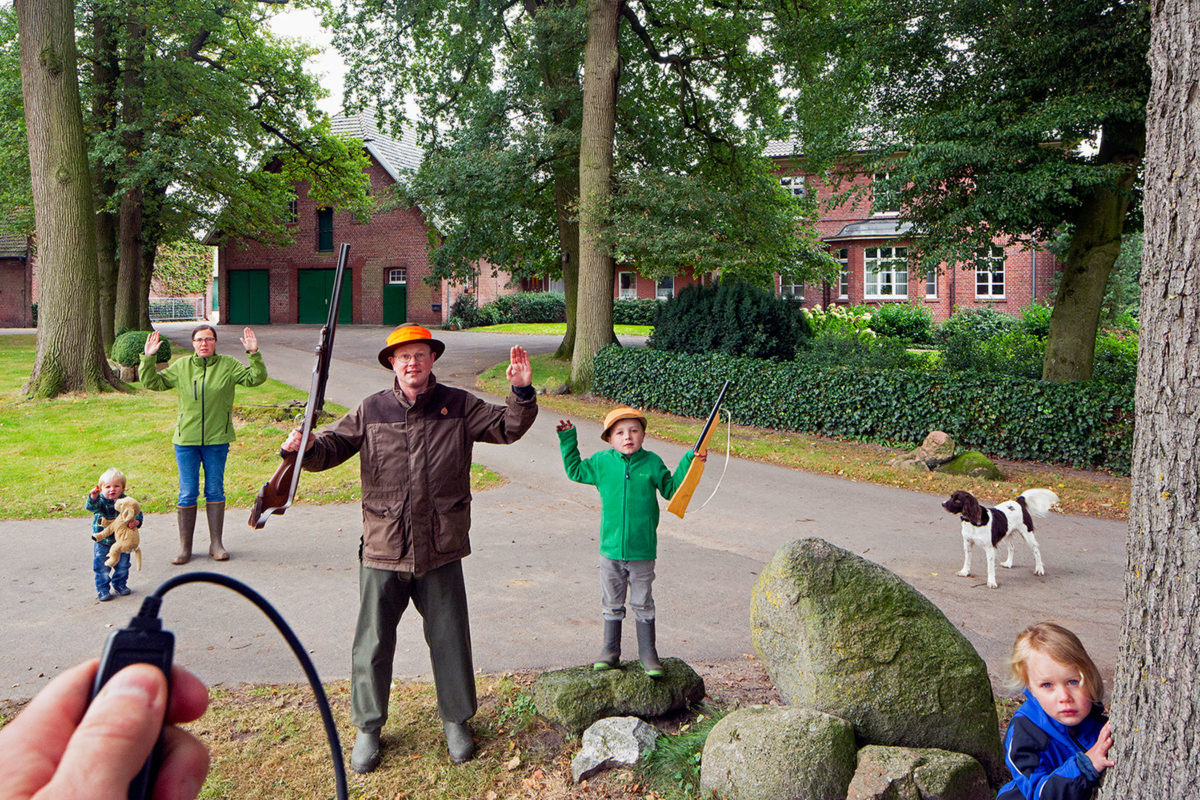
12-10-2016 / Stadtlohn-Almsick (Germany)
Once the camera was set up and everything was adjusted and the family was ready to go, I naively asked the father to point his hunting rifle at the camera in the hope of getting a spicy photo. “No,” he said, “I don’t point my rifle at people.” “Of course not,” I said, “but this is just a game.” “No, not even in a game,” was his reply.
My shoulders sagged. What does that mean, I thought. But above all, what do I do now? I couldn’t possibly force him to do something that went against his principles. After all, I couldn’t take photos that would forever be associated with a negative memory and a feeling of regret for both parties. Especially not a family photo. Further discussion at this point was completely superfluous, his principles were stronger. Not only that, I thought he was right and I liked his attitude more and more.
So we turned the tables. The camera is now the weapon, and I hold the shutter release in my left hand. I’m sure that the story this photo is supposed to tell will end more smoothly than the one I had originally planned.
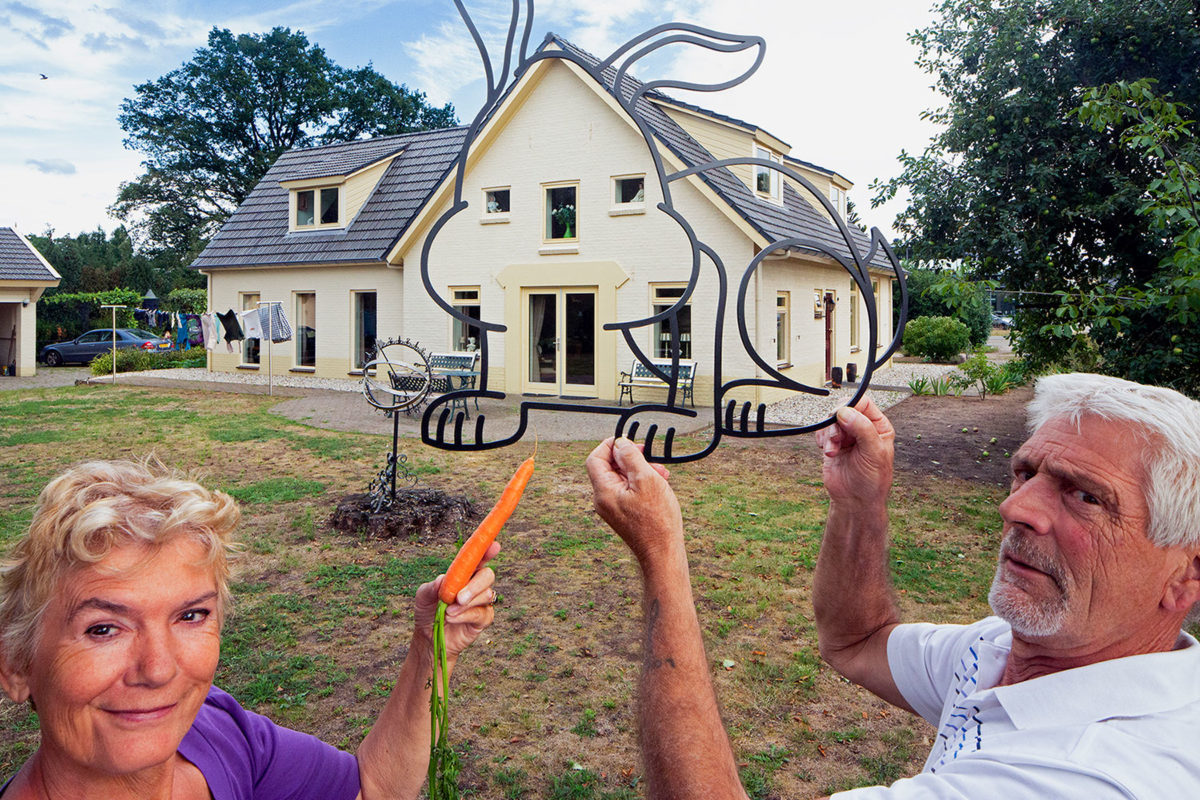
14 -08-2019 / Aalten (Netherlands)
Admittedly, I have difficulty associating the “faces” of the stall facades with real people, but there are certainly some in this series that make me think of animals. There is a mouse, a beaver, a grasshopper, a bear. While these similarities are impossible for me to ignore, they are probably difficult for most viewers to understand.
In the case of this building, the resemblance of the stall facade to a rabbit was so obvious that we spared no effort to convince even the most stubborn disbelievers of the existence of the rabbit’s face in the facade.
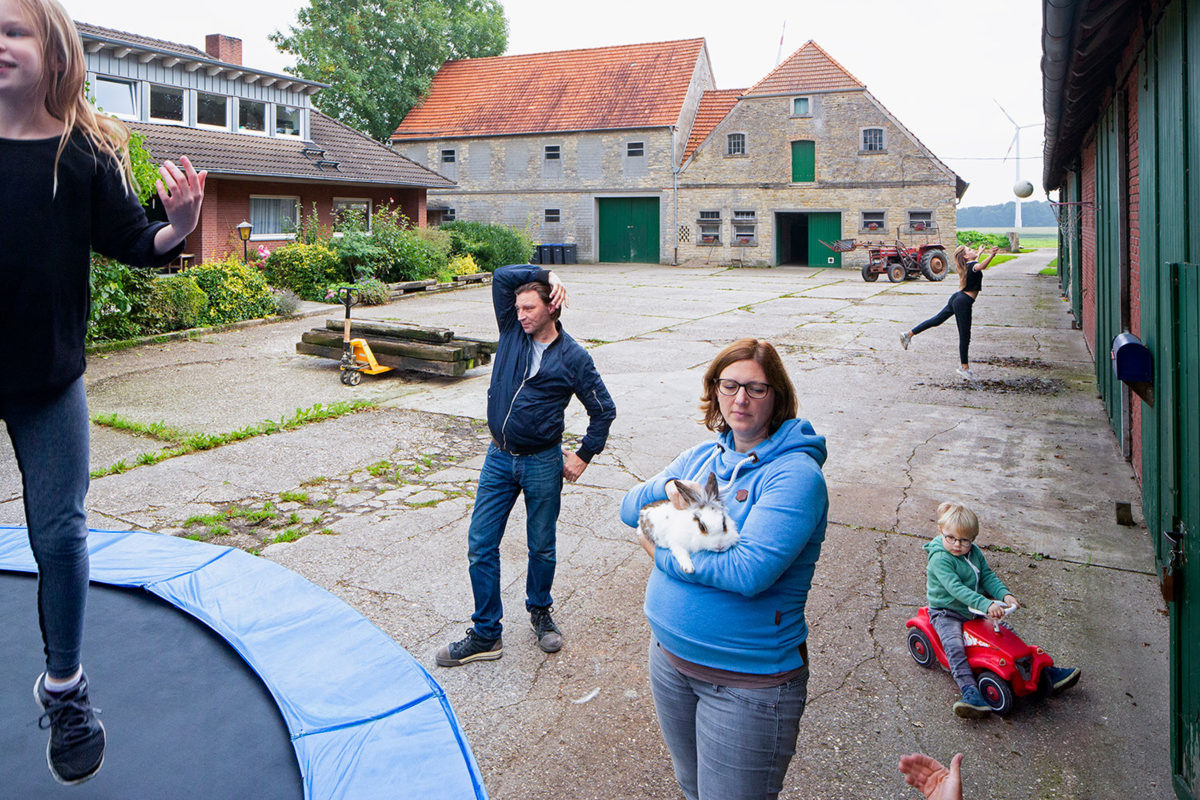
19-09-2017 / Schöppingen-Eggerode (Germany)
The girl jumping on the trampoline is the spectacle of this picture. Is she jumping straight up or is she falling? Perhaps she is at the turning point between the two, as her hand appears to be weightless. The left upper arm hangs down from the shoulder, the forearm is horizontal and at right angles to the upper arm, the hand is powerlessly open, the fingers form a staircase, the index finger tends towards a pointing posture due to a slightly greater distance to the group of fingers. The man standing behind the trampoline on the right has his arm and hand in the same position, only mirrored and rotated by 180 degrees. His right upper arm stretches upwards, his forearm rests horizontally on his head, his hand hangs down powerlessly, like Adam’s hand in Michelangelo’s fresco “The Creation of Adam”.
To stay with Renaissance painting for a moment: With her tilted gaze and light blue hoodie, the woman in the foreground is reminiscent of the many versions of the “Madonna and Child”, in which Mary wears a blue robe covering her shoulders or head and looks down gracefully at the infant Jesus in her arms. In the background: a vast landscape. Although the woman in the photo has a rabbit in her arms, there is indeed a child underneath. Right background: wide landscape.
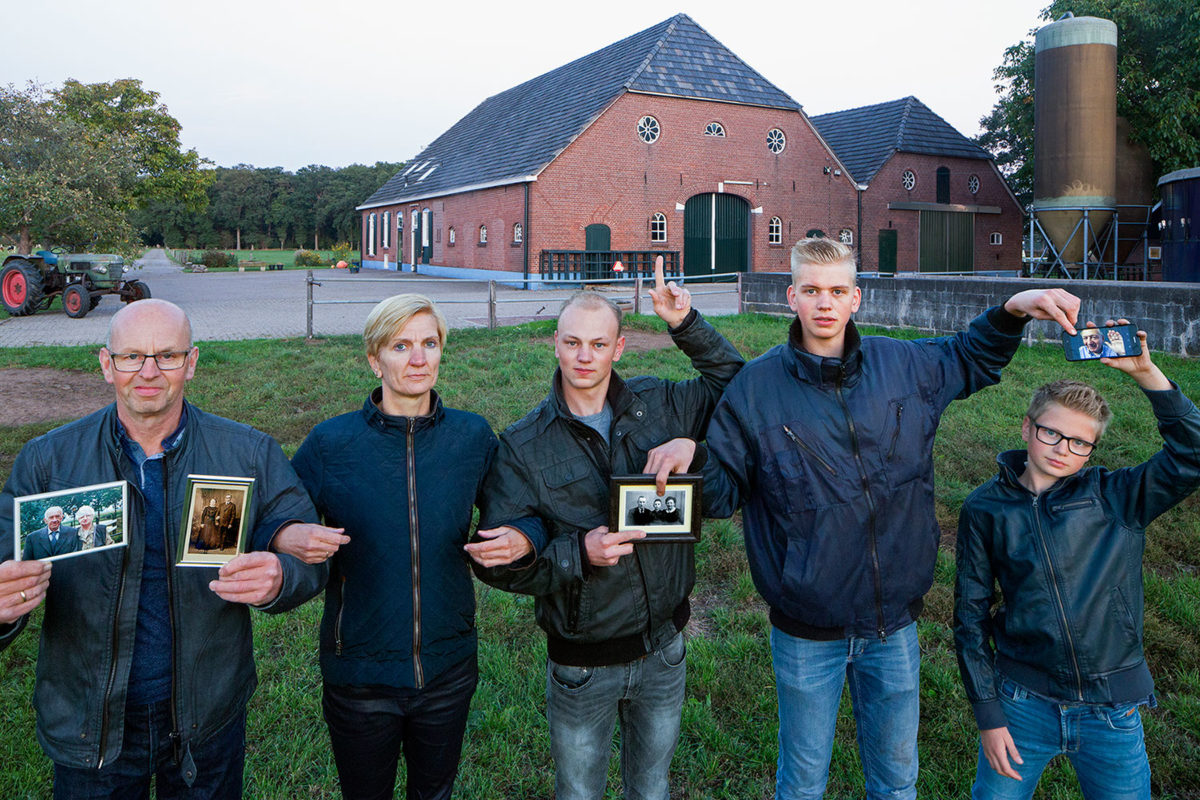
25-09-2018 / Aalten-Lintelo (Netherlands)
The pose of the people reads as follows: On the far left, the father holds a color photograph in his left hand showing his parents. In his right hand he holds a photo in sepia tones showing his grandparents. Hooked like a chain link between father and eldest son, the mother symbolizes the connection between the grandparents in the sepia photo and the family of three in the black and white photo in the eldest son’s right hand. The grandparents in the sepia photo, who ran this farm during the Second World War and the occupation of the Netherlands by Nazi Germany, hid this Jewish family in the black and white photo from September 1942 and also their own eldest son in order to escape labor service in Germany (i.e. the man in the color photo in the father’s right hand) in the hayloft of the horse stable until the liberation in April 1945. The hiding place was located slightly above the spot where the eldest son is pointing with his left index finger. You have to imagine that 70 German soldiers returning from Belgium were also quartered there in the last weeks of the war.
The middle son has now placed his right index finger on the photo of the Jewish family and is pointing at the little boy between the parents, while he touches the screen of the youngest son’s cell phone with his left index finger. The old man on the screen is the little boy from back then in the black and white photo. It looks as if the youngest son is calling his friend, the old man. The old man, who survived the Holocaust together with his parents thanks to the people in the sepia photograph and was about the same age as the youngest son today, seems to be greeting us and waving to us as a sign that he is doing well.
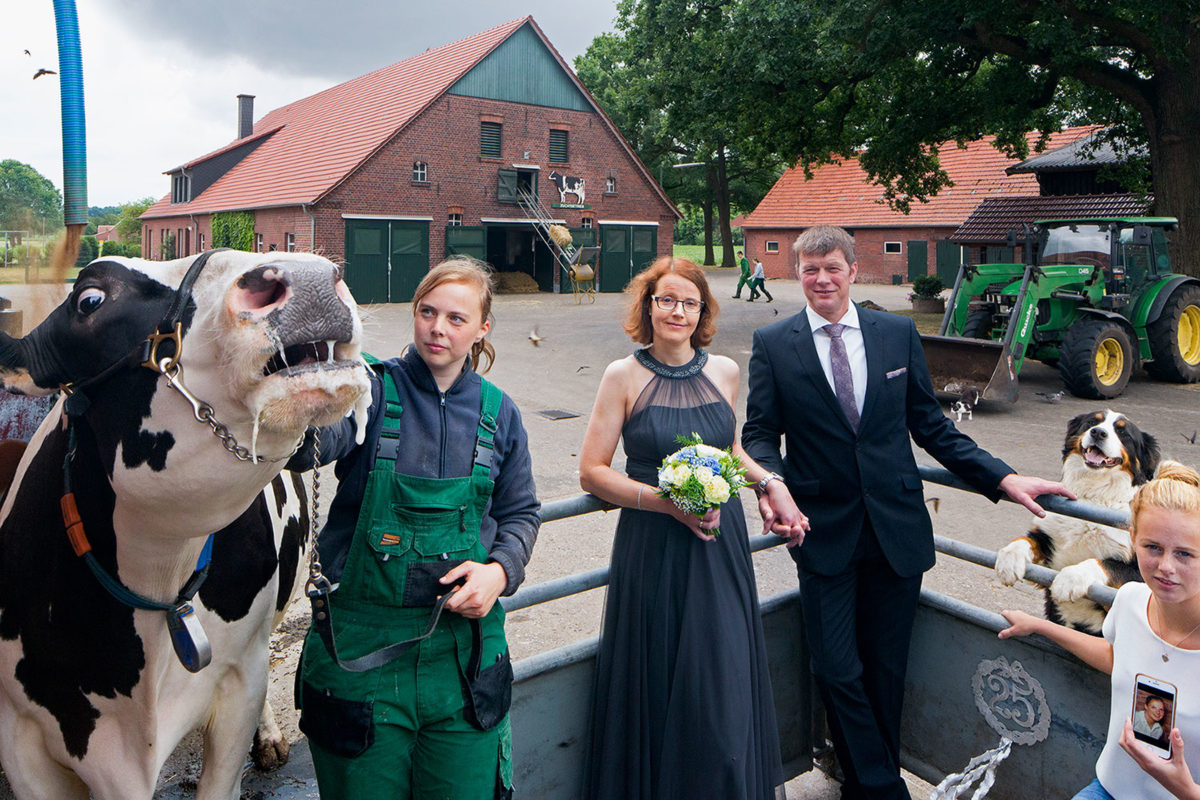
10-07-2018 / Borken-Grütlohn (Germany)
The silver bride and groom are repeated three times in the picture, if you like, in an increasingly abstract form: 1. in the two young apprentices who are completing an internship on this farm and are just approaching the open stable. This is how you could imagine the silver bride and groom as they get to know each other. 2. in the two trees in the background between the stable and the barn. The resemblance is reinforced by the fact that the right-hand tree trunk leans slightly towards the left, just as the man in the foreground leans towards the woman. 3. in the cow’s transponder collar (for activity monitoring). If red connotes female and blue male, then the square red buttons on the left of the collar stand for the mother, the small visible part of the blue tab on the right of the collar for the father and the hanging metal box with the sensor for the holding hands.
Thank you Roland!
Full series on roland-icking.net / instagram.com/rolandicking
